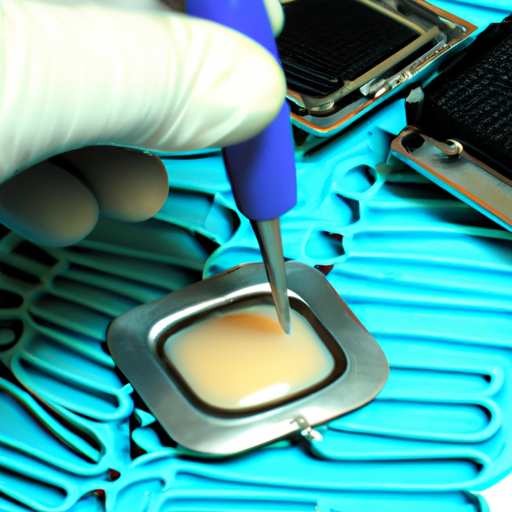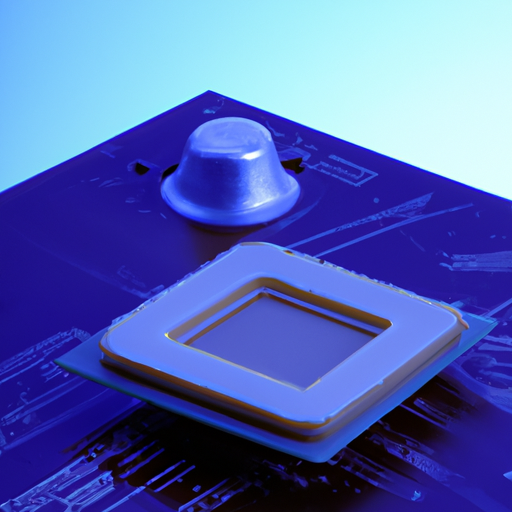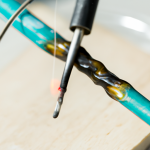“Keep your PC cool with Thermal Paste!”
Introduction
Thermal paste is a type of thermal interface material (TIM) used to fill the microscopic air gaps between a heat sink and a processor or other heat-generating component. It is used to improve the thermal conductivity between the two surfaces, allowing for better heat transfer and improved cooling performance. Thermal paste is an essential component of any computer cooling system, and it is important to choose the right type of thermal paste for your system. In this article, we will discuss the different types of thermal paste, their properties, and how to apply them correctly.
What is Thermal Paste and How Does it Work?
Thermal paste, also known as thermal compound, thermal grease, thermal interface material (TIM), or heat sink compound, is a type of thermally conductive (but usually electrically insulating) compound, which is commonly used as an interface between heat sinks and heat sources such as high-power semiconductor devices. It is designed to fill air gaps and improve the thermal contact between two surfaces.
Thermal paste is a combination of metal oxides, silicones, and other compounds that are designed to fill the microscopic air gaps between two surfaces. It is applied to the heat source, such as a processor, and the heat sink, which is designed to dissipate the heat away from the processor. The thermal paste acts as a bridge between the two surfaces, allowing heat to transfer more efficiently.
The thermal paste works by increasing the surface area of contact between the two surfaces, which allows for more efficient heat transfer. The paste also helps to fill any air gaps that may exist between the two surfaces, which further improves the thermal contact. The paste also helps to reduce the amount of air that is trapped between the two surfaces, which can act as an insulator and reduce the amount of heat that is transferred.
In addition to improving the thermal contact between two surfaces, thermal paste can also help to reduce the amount of noise generated by the heat source. This is because the paste helps to absorb some of the vibrations that are generated by the heat source, which can reduce the amount of noise that is produced.
Overall, thermal paste is an important component of any computer system, as it helps to improve the thermal contact between two surfaces and reduce the amount of noise generated by the heat source. It is important to use the correct type of thermal paste for your system, as using the wrong type can lead to reduced performance and even damage to the components.
The Benefits of Using Thermal Paste in Your PC
Thermal paste is an essential component of any computer system. It is a type of thermal interface material that is used to fill the microscopic air gaps between a processor and its heat sink. This paste helps to improve the thermal conductivity between the two components, allowing for better heat transfer and improved cooling performance.
The use of thermal paste is especially important in high-performance systems, where the processor is running at higher temperatures and needs to be cooled efficiently. Without thermal paste, the processor would be unable to dissipate heat properly, leading to overheating and potential damage to the processor.
The most common type of thermal paste is a silicone-based compound, which is designed to fill the microscopic air gaps between the processor and heat sink. This paste is applied directly to the processor and heat sink, and then spread evenly across the surface. This helps to ensure that the processor and heat sink are in direct contact with each other, allowing for better heat transfer.
In addition to improving cooling performance, thermal paste can also help to reduce noise levels. This is because the paste helps to reduce the amount of vibration between the processor and heat sink, which can cause noise.
Finally, thermal paste can also help to extend the life of your processor. By improving the thermal conductivity between the processor and heat sink, the processor is able to run at lower temperatures, which can help to reduce wear and tear on the processor over time.
Overall, thermal paste is an essential component of any computer system. It helps to improve cooling performance, reduce noise levels, and extend the life of your processor. If you are looking to get the most out of your system, then using thermal paste is a must.
How to Apply Thermal Paste for Maximum Cooling Efficiency
Applying thermal paste correctly is essential for achieving maximum cooling efficiency in a computer system. Thermal paste is a type of thermal interface material that helps to fill the microscopic gaps between a processor and its heat sink, allowing for better heat transfer. If the paste is not applied correctly, it can lead to overheating and potential damage to the processor.
To apply thermal paste correctly, begin by cleaning the surfaces of the processor and heat sink. Use a lint-free cloth and isopropyl alcohol to remove any dust or debris. Once the surfaces are clean, apply a small amount of thermal paste to the center of the processor. The amount of paste should be about the size of a pea.
Next, use a flat object such as a credit card to spread the paste evenly across the processor. Make sure to spread the paste in a thin, even layer. Once the paste is spread, carefully place the heat sink on top of the processor. Secure the heat sink with the appropriate screws or clips.
Finally, plug in the fan and power up the system. Monitor the temperature of the processor to ensure that it is not overheating. If the temperature is too high, you may need to reapply the thermal paste.
By following these steps, you can ensure that your processor is receiving the maximum cooling efficiency possible. Applying thermal paste correctly is an important part of keeping your computer system running smoothly.
The Different Types of Thermal Paste and Their Pros and Cons
Thermal paste is a type of thermal interface material used to fill the microscopic air gaps between a heat sink and a processor. It is designed to improve the thermal conductivity between the two surfaces, allowing for better heat transfer and improved cooling performance. Thermal paste is essential for any computer system, as it helps to keep the processor from overheating and potentially damaging the system.
There are several different types of thermal paste available, each with its own set of pros and cons. The most common types are silicone-based, metal-based, and ceramic-based.
Silicone-based thermal paste is the most widely used type of thermal paste. It is relatively inexpensive and easy to apply, making it a popular choice for many users. It is also non-conductive, meaning it won’t cause any short circuits or other electrical problems. However, silicone-based thermal paste does not provide the best thermal conductivity, so it may not be the best choice for high-performance systems.
Metal-based thermal paste is more expensive than silicone-based paste, but it provides better thermal conductivity. It is also electrically conductive, so it should not be used in systems with sensitive components. Metal-based thermal paste is also more difficult to apply, as it requires a higher level of precision.
Ceramic-based thermal paste is the most expensive type of thermal paste, but it provides the best thermal conductivity. It is also non-conductive, making it safe to use in systems with sensitive components. However, ceramic-based thermal paste is also the most difficult to apply, as it requires a very high level of precision.
No matter which type of thermal paste you choose, it is important to make sure that it is applied correctly. Improperly applied thermal paste can lead to poor cooling performance and even system damage. It is also important to make sure that the thermal paste is replaced regularly, as it can degrade over time.
In conclusion, there are several different types of thermal paste available, each with its own set of pros and cons. It is important to choose the right type of thermal paste for your system, and to make sure that it is applied correctly and replaced regularly.
Troubleshooting Common Issues with Thermal Paste
Thermal paste is a critical component of any computer system, as it helps to ensure that the processor and other components remain cool and functioning properly. However, if the thermal paste is not applied correctly, or if it is of poor quality, it can lead to a variety of issues. Here are some of the most common issues associated with thermal paste and how to troubleshoot them.
1. Overheating: If your computer is overheating, it could be due to a lack of thermal paste or an inadequate amount of thermal paste. To troubleshoot this issue, check the amount of thermal paste that has been applied and make sure it is sufficient. If it is not, apply more thermal paste to the processor and other components.
2. Poor Performance: Poor performance can also be caused by inadequate thermal paste. To troubleshoot this issue, check the amount of thermal paste that has been applied and make sure it is sufficient. If it is not, apply more thermal paste to the processor and other components.
3. Poor Quality Thermal Paste: Poor quality thermal paste can also lead to a variety of issues. To troubleshoot this issue, check the thermal paste that has been applied and make sure it is of good quality. If it is not, replace it with a higher quality thermal paste.
4. Poor Contact: Poor contact between the processor and other components can also lead to a variety of issues. To troubleshoot this issue, check the contact between the processor and other components and make sure it is sufficient. If it is not, apply more thermal paste to the processor and other components.
By following these steps, you should be able to troubleshoot any issues related to thermal paste. If the issue persists, it is recommended that you seek professional help.
Conclusion
Thermal paste is an essential component of any computer system, as it helps to ensure that the components of the system are able to function properly and efficiently. It is important to use the right type of thermal paste for the specific components of the system, as this will help to ensure that the system is able to run at its optimal performance. Thermal paste is also relatively inexpensive and easy to apply, making it a great choice for anyone looking to improve the performance of their computer system.





